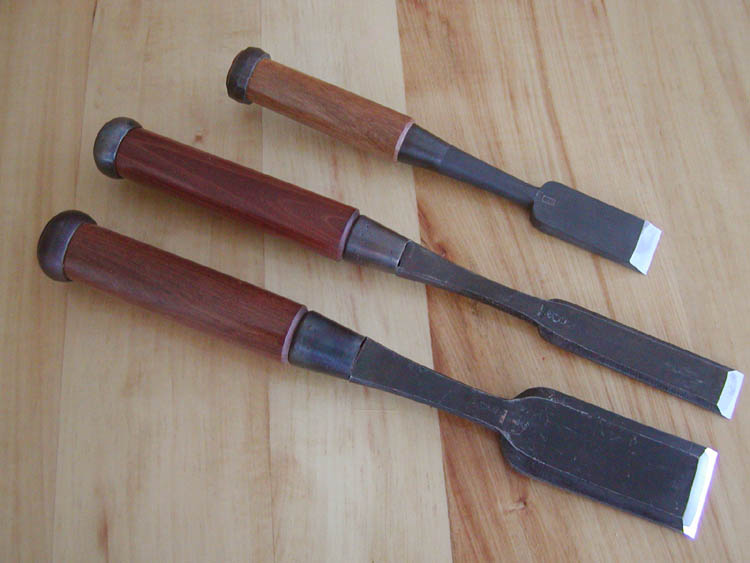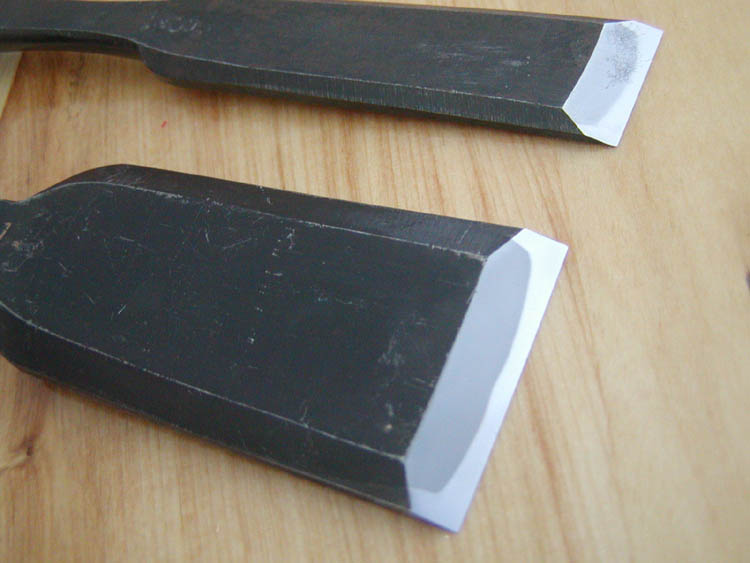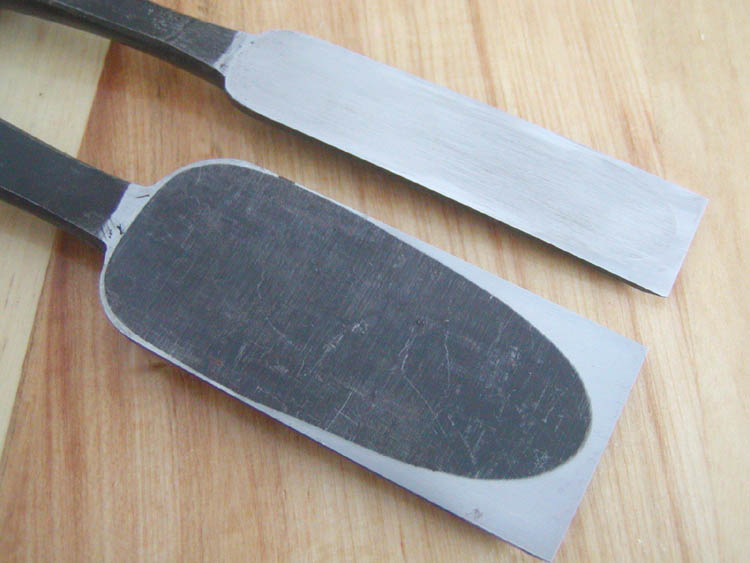| Home > Oiire > Senkichi Nimai Ura (Double Back Hollow) 22mm |
|
Probably well made White Steel #2. Fairly easy to sharpen, but the edge is quite tough. These are over 30 years old stock, so the age hardening effect might have hardened it to this level.
Usu-nomis are thinner chisels that are used for places where normal Oiire-nomi (bench chisels) can't fit. For instance, for making a narrower tennon hole, opening the socket of plane block, etc. The thickness ranges from 4mm at the tip to 6mm at the neck where it is the thickest. As you can see the neck is made flat as well. These can also be used just like Oiire-nomi.
The overall length is 30cm, so it is more Tataki-nomi rather than Oiire.
Both of them are fully sharpened and polished using a fine finishing natural stone, so it can be used right away, and also would be a great reference to learn how a properly sharpened chisel should look like. Noramlly I charge up to $60 just for this sharpening.

Top is Kiyohisa oiire nomi for comparison of the size. Middle is the 15mm. The one at the bottom is 36.5mm.
Handle polished and oiled. I'm not sure of the handle material but it is a very very hard and dense wood. I'm guessing "Kaba (Japanese birch?)" which is used for the abacus beads in Japan. Abacus beads need to be quite high in shock resistance, because they are pierced through when they are so small, and flicked up and down in high speed. Quite expensive material which is rarely used for handle material these day.
Kuchigane (ferrule) and the hakama (striking hoop) polished and coloured in traditional Tokyo way.

The corners are meticulously wrapped symmetric. Semi hazy bevel finished with very fine natural finishing stone. Sorry since it's been a bit humid lately the 15mm rusted a little under the cap. It'll go away next time you sharpen it. No effect on the performance.

Back perfectly flattened. The back of 15mm was restored using a sen. I learned this technique from master Iwasaki Shigeyoshi, and his apprentice who is in charge of all Iwasaki products Mizuochi-san, when I forged a kiridashi knife at their factory.
The back now looks better than it's original machine ground back!(^^) The hollow is now ground in "Tatesuki (ground lengthwise)" as seen in more expensive tools and knives. The hairline is much finer than the original machine ground back hollow. I even finished it using a natural stone.
